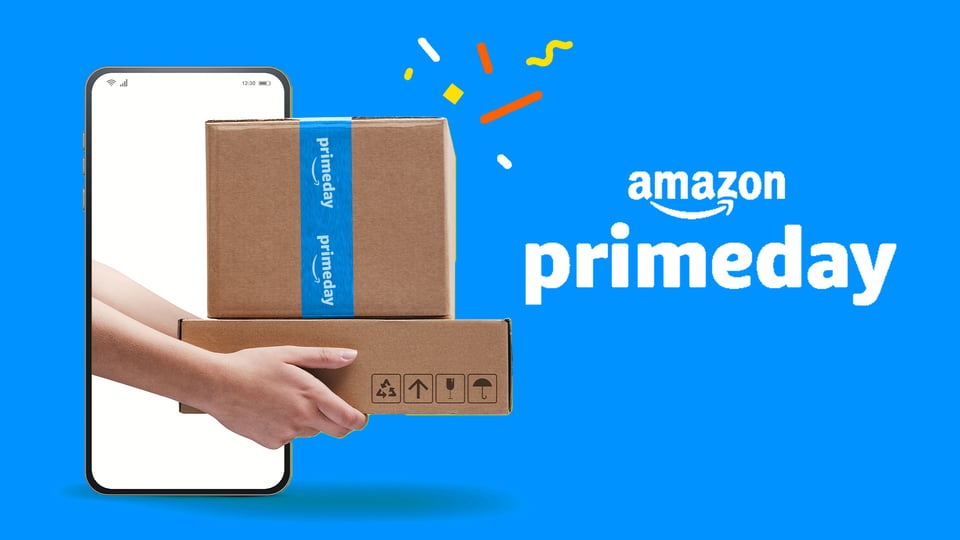Key takeaways for marketplace sellers: What Prime Day 2025 taught us💡
- Plan for pacing, not just for spikes: Whether or not the four-day format becomes the norm, advertisers should prepare for longer campaign durations. With competitors also capitalizing on this extended shopping period, campaigns must be structured for sustained performance throughout the week, not just early peaks.
- Discount with integrity: Both consumers and regulatory boards are catching on to deceptive pricing games. Use genuine deals to garner trust and increase conversion rates.
- Start early: The top-performing brands of 2025 kicked off their advertising campaigns, content updates, and promotions 7-10 days before Prime Day.
- Think beyond Amazon: Target and Walmart have emerged as serious contenders this year. Coordinate pricing, messaging, and advertising strategies across multiple marketplaces for maximum visibility.
- Invest in automation: Manual systems have been known to struggle under peak loads.
- Stay visible where it matters: Search ranking remains a critical factor. Invest in fine-tuning media that drives visibility and conversion.
Amazon’s Prime Day Sale initially began as a celebration of the marketplace's 20th birthday in 2015. Back then, the single-day event sparked a consumer frenzy, with roughly $900 million spent. Prime Day 2025, a four-day event, was similarly historically significant, marking the longest and most lucrative of its kind to date, pulling in over $24.1 billion in U.S. ecommerce spending, up 30.3% year-over-year.
But beneath the flashy headlines and startling statistics lies a complex picture for marketplace sellers; one of intensified competition from rival platforms, evolving marketplace dynamics, and shifting consumer behavior dynamics. The new four-day format altered the tempo. Consumers purchased with increased intention. Walmart, Target, et al siphoned attention—as well as dollars—through competing events. Ultimately, brands that failed to predict and adapt to these factors likely missed out.
As we continue to unpack Prime Day 2025, one key takeaway for sellers has become clear: peak events such as these are no longer solely about spikes. They’re about sustained performance, strategic timing, and cross-channel agility.
A new format with mixed results
The most noticeable change that happened in 2025 was Prime Day extending to four days (which makes us wonder when we can start just calling it Prime Week), doubling the previously established two-day window. This move was touted as a logical method by which to reduce system strain, spread traffic, and increase shopper engagement. However, this tactic yielded a decidedly mixed bag of results. Although Amazon celebrated this as its biggest event to date, they’ve withheld unit-level sales data for the first time in years.
So what can we possibly extract from this?
A 30.3% year-over-year jump in sales is remarkable, but while the extended window irrefutably contributed to total dollar growth, this figure doesn’t tell the full story.
For example, day-one sales fell by 41% compared to 2024. Momentum also dropped early, with many brands opining that the extended format diluted urgency. Consumers were content to browse, but they didn’t always smash the buy button.
Consumers spent more, but spent smarter
While we noted a surge in overall sales, it also became clear that consumers were price-conscious and deliberate with their purchases. Average product prices jumped by roughly 1% in the lead-up to Prime Day to facilitate a “drop” during the event itself. The result of this was essentially that only 20-25% of sale items offered genuinely meaningful discounts.
This tactic is becoming increasingly transparent to the modern, clued-in consumer—and they reacted accordingly in 2025. There was a marked shift in behavior toward intentional, high-value purchases instead of impulse buys. As brands leaned into artificial markdowns, shoppers responded with caution, honing in on high-value categories like home & kitchen, consumer electronics, beauty, and fashion, where discount levels were more compelling.
Hero categories held their ground, but competition is heating up
Though consumer electronics, homeware, fashion, and beauty continued to dominate Prime Day sales, competition across these categories is intensifying. Walmart’s six-day “Deals” event—which overlapped Prime Day—delivered a 24% year-over-year increase in Walmart.com sales. That’s six times Amazon’s own YoY growth rate!
Walmart also beat Amazon in terms of engagement metrics, recording a 14% growth in web traffic and a 22% increase in app usage. Even more indicative of a shift in consumer behavior is that 8% of Prime Day shoppers also purchased via Walmart, up from 5% the previous year. Target’s “Circle Week” also contributed to an increasingly competitive discount environment across marketplaces.
According to the findings in the Marketplace Shopping Behavior Report 2025, this points to a continuing decline in single-platform loyalty, with the average consumer now visiting 2 to 3 different marketplaces before committing to a purchase. It’s clear, then, that remaining competitive in this environment requires multichannel presence and alignment across many platforms.
Ad performance peaked, but only if you planned ahead
Despite the stiff competition, Prime Day 2025 was a win for brands that optimized their media early, with many reporting record-breaking advertising efficiency. Amazon delivered lower cost-per-click (CPC) rates, improved click-through rates (CTR), and better return on ad spend (ROAS) when full-funnel strategies were employed.
However, success in this domain isn't a given: it is reliant on timing, targeting, and momentum. Successful brands ramped up their advertising 7-10 days before Prime Day rather than relying solely on reactive day 1 spikes.
Automation and integration software gave brands a critical edge
Effectively managing peak events across multiple platforms is no small feat and can easily consume your operational bandwidth. Brands ahead of the curve in 2025 leveraged automation on marketplaces to:
- Synchronize advertising across Amazon, Walmart, and Target.
- Move towards dynamic pricing.
- Adjust inventory levels and availability in real time.
- Maintain listing integrity under heavy load.
Manual workflows simply can’t compete in a 4-day, multichannel, and algorithm-driven cycle. In fact, brands using dynamic pricing were able to respond to competitor price shifts almost instantaneously - not in hours or even days. The key takeaway here is that tech is no longer an optional extra. Automation and integration software are baseline requirements for brands wanting to compete during Prime Day 2026.
Don't forget to check out our Prime Day guide for marketplace sellers.
Looking ahead to Prime Big Deal Days and 2026
Amazon has already declared Prime Day 2025 its most successful event to date, even though it declined to share unit-sold data. While this reinforces the strength of the Amazon marketplace, it also signals a move toward more curated reporting and controlled messaging.
Looking toward similar events in the future, sellers should be anticipating even more synchronized competitor events and growing consumer skepticism toward manufactured markdowns. To us, this highlights the growing importance of unified brand messaging across all channels.
If Prime Day 2025 taught us anything, it’s that peak performance hinges upon early planning, technological agility, and omnichannel execution. This year wasn’t just about making sales; it was also about learning how to sell better and showing up earlier and smarter than your competitors.
Book a free consultation to find out how you can join them.

 Mitchell Dröge,
Mitchell Dröge, 


